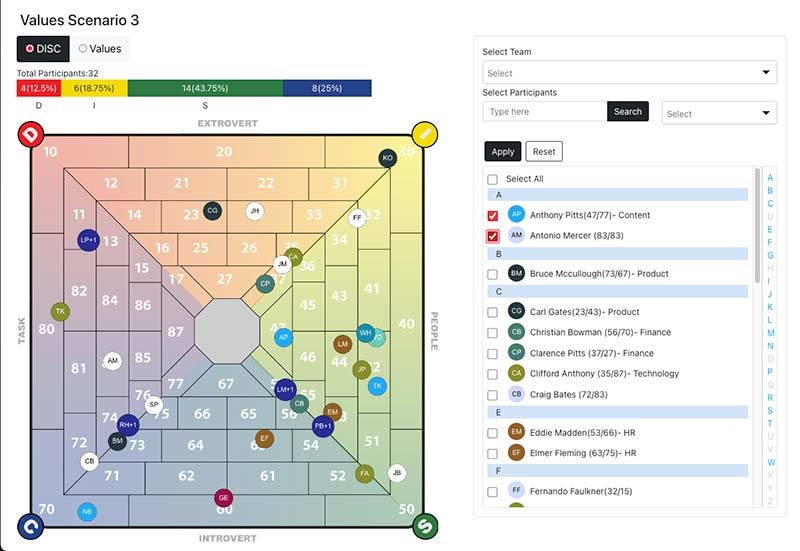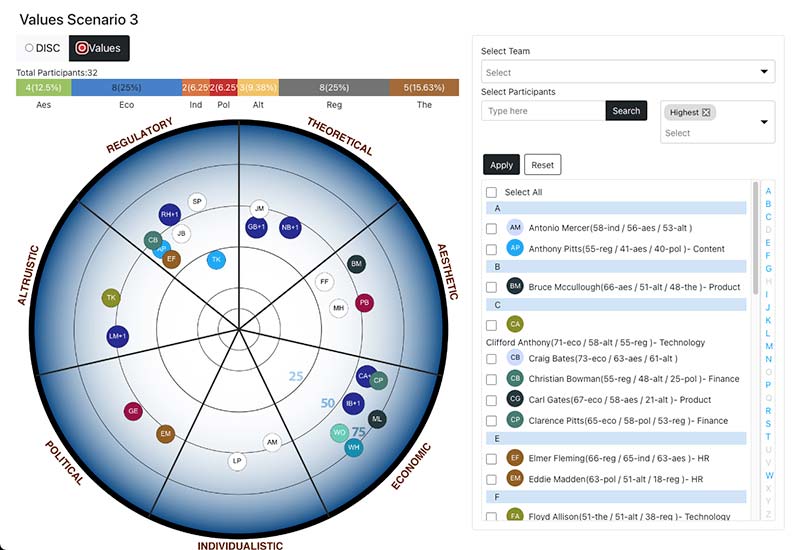Behavioral Assessment Calculator
Enter your company information below and an Assessment Specialist will email you a quote based on your needs. You can speak with a representative at any time (865) 896-3472
Which do you experience as you drift off to sleep?
Or maybe you experience a bit of both or are unsure whether your team is functional or dysfunctional. It’s possible you’ve become conditioned to believe that your team will never change no matter what you do.
Table of Contents
We believe awareness is step one. If you can acknowledge that your team needs help, you’re on your way to fostering an environment where significant change can take place.
Take a minute and read through this list of potential improvements that could become your team experience with some concerted effort.
How many of these improvements do you desire for your team?
Whether your answer is one, some, or all, you can increase the odds of creating some team harmony by actively taking steps to improve your team dynamics.
Creating a dream team is no easy prospect but there are tools available to you.
You may have noticed behavior and values were mentioned often in the list above. By using a DISC+plus tool with your team and holding a facilitated session where the results are shared, you are opening the door to positive changes for everyone on your team.
This tool provides you with the resources to gauge not only how people prefer to behave, it also measures what motivates them to act the way that they do. When you know their highs and lows on the DISC and Values charts, you can ensure they are in positions that speak to those highs and lows and delegate tasks appropriately.
Meaningful change can happen when you gather behavioral data on your individual team members and share it in a group setting. When everyone in a conference room understands the behavioral preferences of each other as identified by the DISC categories, they can see who has a tendency to be Decisive, Interactive, Stabilizing, or Cautious. Here’s what a team DISC report shows:

Each participant is assigned a bubble on the grid based on their highs and lows in each category on their DISC report. The color of the bubble denotes what particular team they are in, i.e. sales, operations, accounting, etc. And it’s easy for the report owner to isolate and view one team vs another, and combine teams that usually work on tasks together to see their behavioral similarities and differences.
Note the colored bar at the top of the graph. It shows that of the 32 people who have taken the DISC assessment, almost 44% of them have Stabilizing as their behavioral preference. This means that change may come hard to them, and they prefer to avoid conflict. This may make them quieter during your group sessions, but it sure won’t prevent them from speaking up in a smaller group setting. Particularly if they’re unhappy with the speed of the pace of change.
Further details on that colored bar show a smaller percentage of higher D and I personality types. You might think the higher S and C types would dominate your team meetings based on their greater numbers. Actually, those D and I types are generally more talkative and will want to control the conversation. It’s your job to ensure there’s small group work that will help to draw out the opinions of the S and C types.
Once you know everyone’s strengths and preferences, you can more effectively delegate. To ensure your team meetings are focused and fruitful, assign a higher S or C to handle the agenda, take minutes, or be a timekeeper who can ensure equal stage time to all attendees. If a presentation is warranted, offer that opportunity to a higher D or I, who typically enjoys the spotlight and excels at communicating in large groups.
Help the individuals on your team understand and value the behavioral diversity that exists between members, and communication, collaboration, and cohesiveness will be just around the corner.
Appreciation of behavioral diversity will get you far, and values diversity will get you even farther.
Now that your team has shared their preferred behavioral characteristics, turn up the volume by also sharing their motivational similarities and differences. The Values Index report classifies peoples’ top values in 7 distinct areas: Aesthetic, Economic, Individualistic, Political, Altruistic, Regulatory, and Theoretical.
Here’s a look at a team Values report:

Again, you’ll note the bubbles that classify each team member’s top value, and that those bubbles are colored to denote which team they are working on.
The bar across the top signifies that of the 32 people taking the Values Index assessment, you’ve got a tie for first place. 25% possess an Economic motivator and 25% have Regulatory as their highest. Why does knowing that matter?
If you are trying to get your team to accomplish a goal, to appease the higher Economically motivated, make sure your message includes concrete milestones, solid results, and relevant rewards for achieving the goal.
The higher Regulatory folks would prefer to have documentation on the process you expect the team to use to accomplish the goal. They may not be as motivated by the rewards, but they usually gain more satisfaction when they can check off the boxes on all of the steps they took to accomplish the designated outcomes.
In short, the way you frame the goals you wish to accomplish should shift based on who is in the audience.
The higher Aesthetics want to be sure everything is balanced and harmonious and that everyone benefits equally.
The higher Politicals will want to know how they can exert their will to accomplish the goal.
The high Altruists will question you on who will benefit and how it will impact others.
Your high Individualists will help you to achieve the goal but they’ll want to get there in their own unique way.
And your high Theoreticals will desire all the research you gathered to know this is the right way to go.
While it’s challenging for a leader to create one cohesive message that addresses everyone’s high values, what you can do is to speak to the majority during team meetings and then schedule smaller team discussions where you can customize your message based on the top value of that particular team.
Tools like the Team DISC and Team Values reports are instrumental when you’re trying to create harmony on your staff. Once you have them singing from the same sheet of music, they’ll be able to communicate and collaborate with each other and you’ll know how to better communicate and collaborate with them.
As you open your eyes after another one of those scary team nightmares, realize you have options for creating that awesome team you’d prefer to be dreaming about.
Sign up for your Business Discovery Session with one of our DISC assessment specialists.